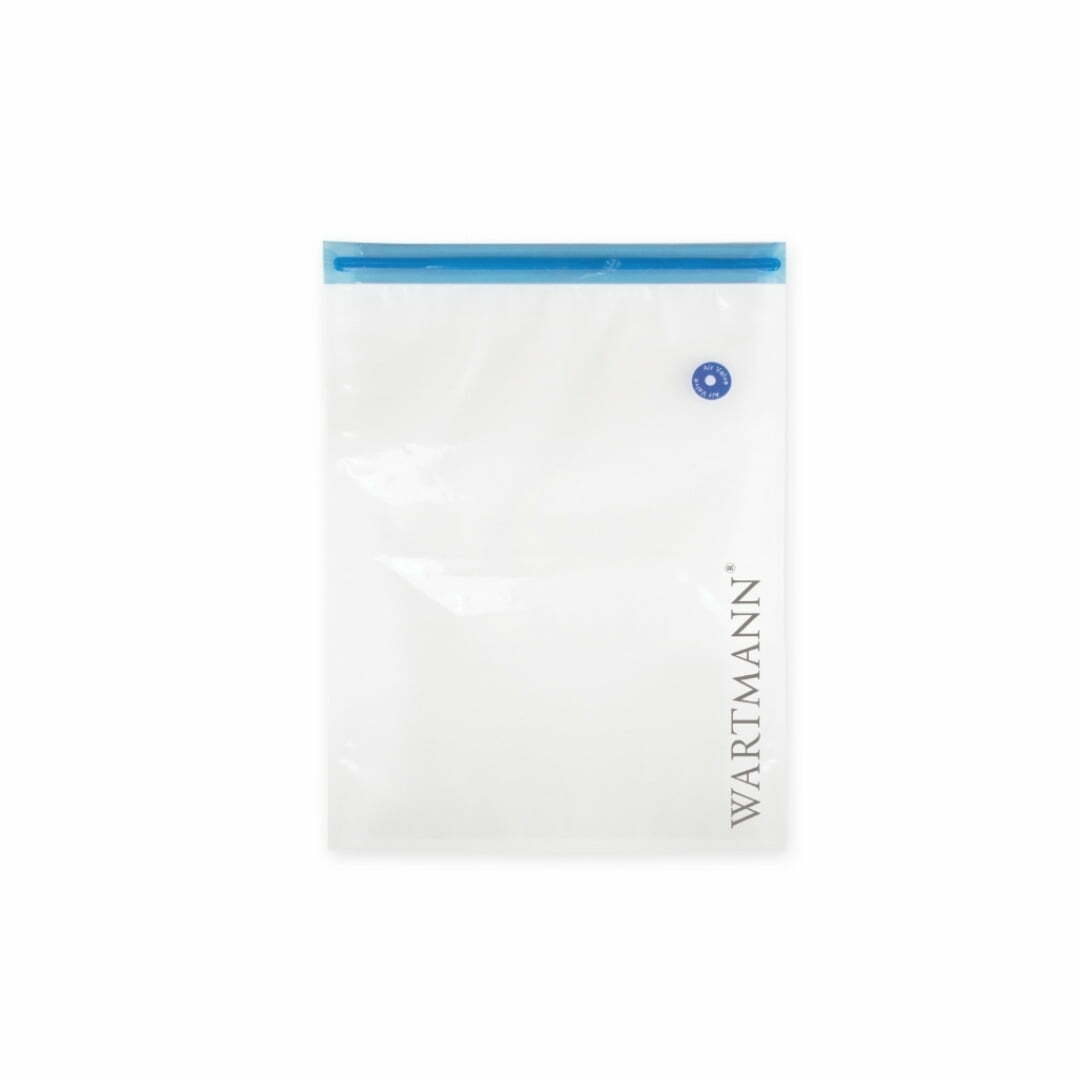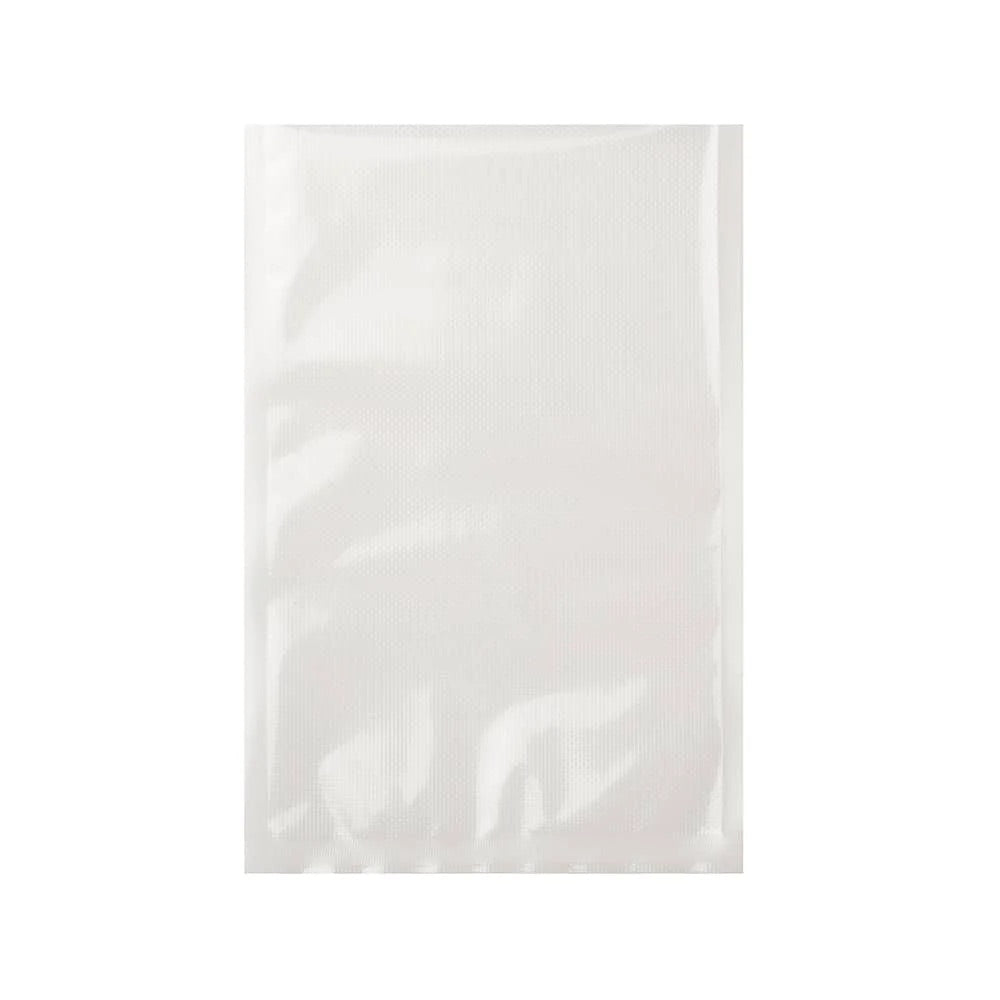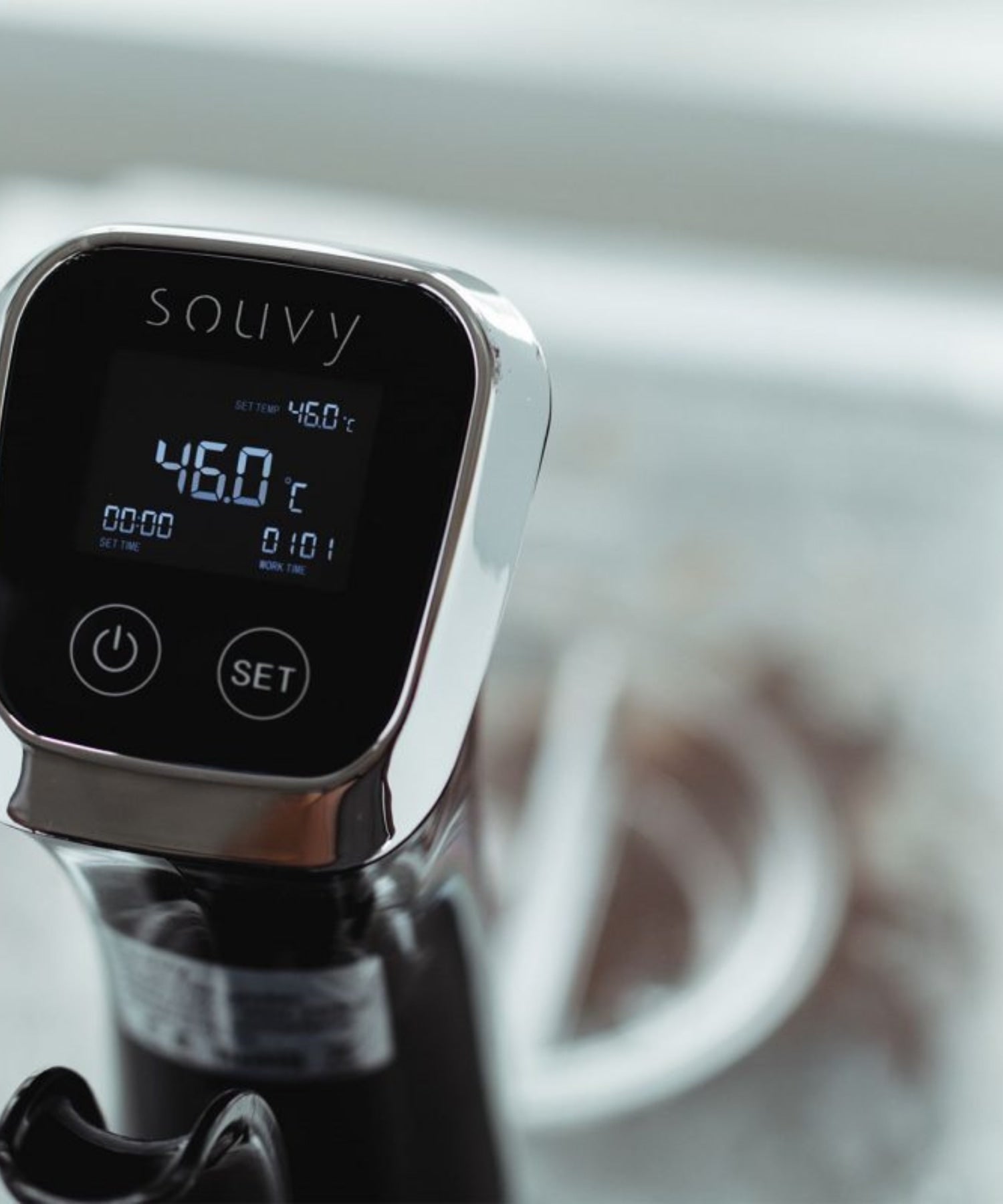There are different types of vacuum bags available, depending on the size, thickness, and compatibility with your vacuum equipment. For example, the special bags for sous vide cooking are often thicker and more heat-resistant than the standard vacuum bags. There are also vacuum bags for storage in the freezer or for marinade. At Souvy you will find vacuum bags with moisture-absorbing strip , resealable vacuum bags or vacuum bags on a roll .
Curious about the benefits of vacuum bags and the different ways they can be used? Read it here!
Freeze and reheat
Did you cook a little too much and do you want to freeze it so that you can heat it up in the microwave later? No problem. The 5-layer vacuum bags are extra thick and suitable for both the microwave and the freezer. Because the food is vacuum packed, there is no oxidation. This extends the shelf life of the packaged product by up to 5 times. With the vacuum bags from Souvy you can store your food without worries or heat it up later.
What are the benefits of vacuum bags?
At Souvy, we believe that vacuum bags are an indispensable tool for any hobby chef. By pulling the vacuum out of the bag, the flavors of the food are prevented from being affected by oxidation. This keeps the food fresh for longer and preserves the flavors and nutritional values. The growth of bacteria and mold is also limited, which means the food has a longer shelf life. In addition, vacuum bags are essential for sous vide cooking. Did you know that you can make the most delicious dishes using sous vide preparations? Read our top recipes for sous vide cooking on our website! With vacuum bags, you ensure perfect cooking and preservation of flavors and nutritional values.
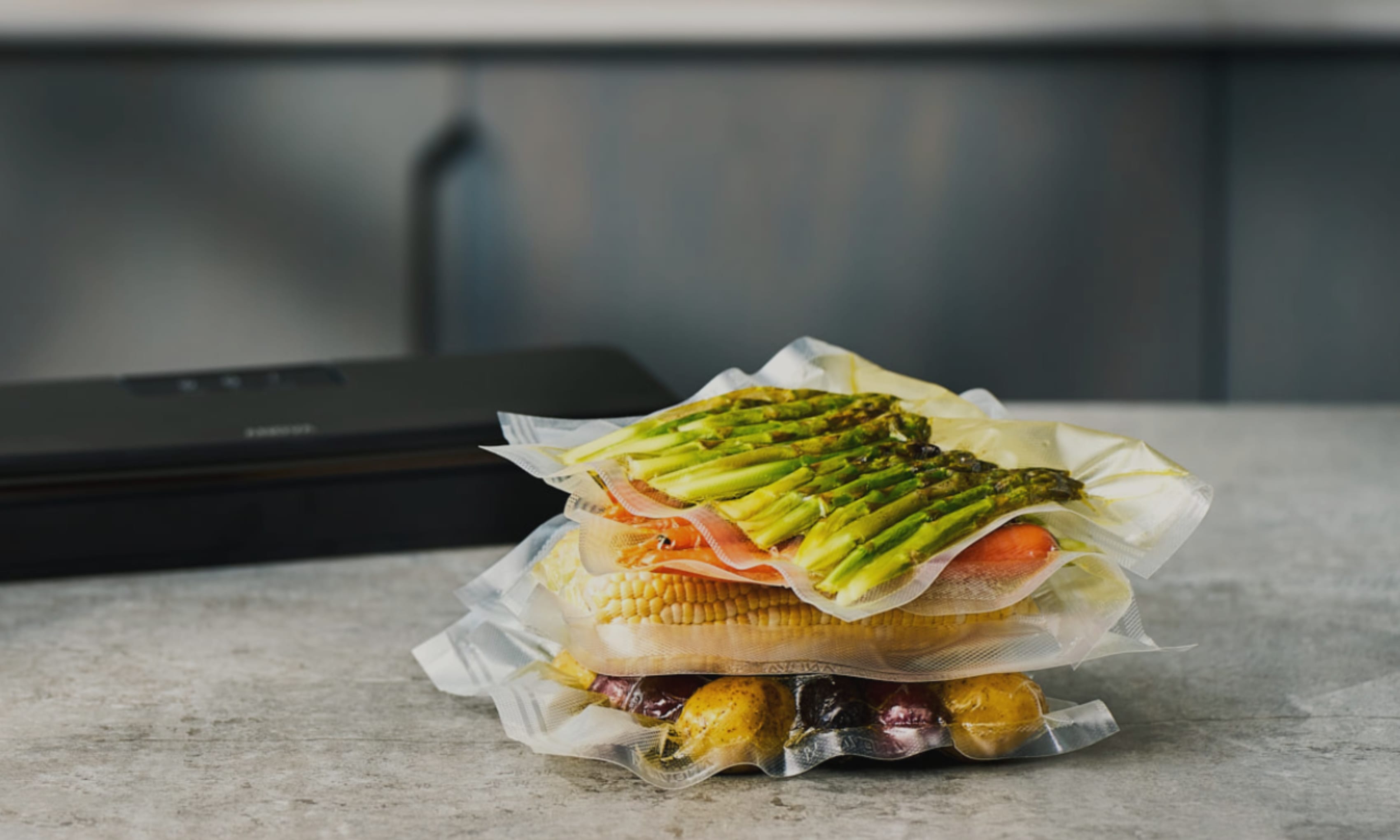
How do you use vacuum bags?
Using vacuum bags is very simple, but it is important to follow the steps correctly to get the best results. To start, place the food in the vacuum bag, making sure there are no air bubbles. Then, close the bag using a vacuum sealer or a hand pump. Once the bag is vacuumed, it can be stored in the refrigerator or freezer. Make sure you use the correct settings on the vacuum sealer for the type of food you want to vacuum seal. For delicate products, such as fruit or vegetables, we recommend vacuuming the bags on a lower setting to prevent damage. For meat or fish, we recommend a higher setting. We also recommend always checking the packaging and expiration date of the product before vacuuming. If you follow these steps, your food will stay fresh for longer, retaining its flavors and nutritional values. That is what makes vacuum bags such a valuable addition to your kitchen.
How long does food stay fresh in a vacuum bag?
It is difficult to give an exact shelf life for food stored in a vacuum bag. This depends on several factors such as the type of food, the amount of air in the bag and the storage conditions. In general, food that is vacuum-packed correctly can stay fresh longer than food that is stored in a different way.
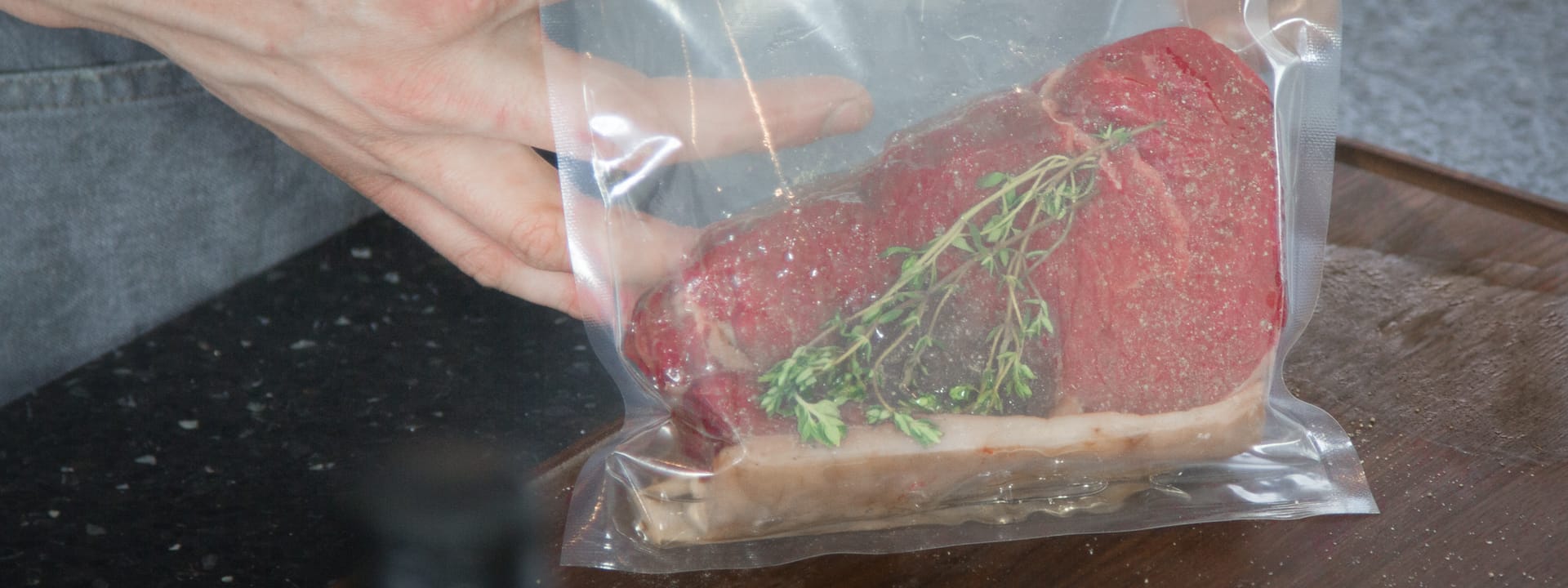
For meat, for example, vacuum packaging can extend the shelf life from a few days to a few weeks. Fish can stay fresh in vacuum bags for a week or two, and vegetables can stay fresh for up to a month.

It is important to remember that any food that is not fresh, or any food that has an unpleasant odor or taste, should be thrown away immediately, regardless of how long it has been stored in the vacuum bag.
It is therefore important to note the date of vacuuming and the expiration date of food in the vacuum bag. Consume the products within the expiration date.
Frequently asked questions about vacuum packaging
Do you have questions about vacuuming? View the most frequently asked questions here. Do you have specific questions? Please contact us!
What are vacuum bags?
Vacuum bags are special plastic bags used to seal food airtight. By removing the air from the bags, the shelf life of the food is extended and the flavors are better preserved.
Can I vacuum seal all types of food?
In general, many different types of food can be vacuum packed. Think of meat, fish, vegetables, fruit, cheese, grains, pastries and even some types of sauces and marinades.
However, there are some types of food that are not suitable for vacuum packaging. Such as food with a high moisture content, such as mushrooms, cucumbers, tomatoes, and other fruits and vegetables with a lot of moisture, because they usually go moldy in the vacuum bag. You can first dry the food with a food dehydrator and then vacuum pack it! Check out the Souvy food dehydrators on our website! In addition, food with a high sugar content, such as jam, is also not suitable for vacuum packaging.
Some foods, such as cooked potatoes, can be vacuum sealed, but their texture may change if stored in a vacuum for extended periods of time.
It is recommended to vacuum pack a small amount of food first and test whether the taste, texture and shelf life are to your liking before vacuum packing the rest of the food.
Can I reuse vacuum bags?
Many vacuum bags are single-use and cannot be reused. This is because the vacuum technology in the bags is specifically designed for vacuum packaging food, and the bags can be damaged or contaminated after opening and closing.
However, there are also reusable vacuum bags available that are specifically designed for repeated use. These bags are often made of sturdier material.
It is important to take hygiene into account when reusing vacuum bags. These bags should be washed or disinfected after each use to ensure that they remain hygienic and free from bacteria or mold.
How do vacuum bags work?
Vacuum bags work by using a vacuum machine to remove all of the air from the bag. This creates an airtight seal that prevents oxidation and bacterial growth, keeping food fresher for longer.
What are the benefits of using vacuum bags?
- Extended shelf life: Food stays fresh for much longer compared to traditional storage methods.
- Better taste and texture: Airtight packaging prevents drying out and loss of flavor.
- Space saving: Vacuum-packed products take up less space in the refrigerator or freezer.
- Suitable for sous vide cooking: Vacuum bags are ideal for sous vide cooking, where food is cooked slowly at a constant temperature.
Are vacuum bags safe for sous vide cooking?
Yes, most vacuum bags are specifically designed to withstand the temperatures used in sous vide cooking. However, it is important to check that the bags are BPA-free and suitable for high temperature cooking.
Can I vacuum pack liquids?
Yes, but it can be a bit trickier. It is often best to freeze liquids first before vacuuming them to prevent them from getting into the vacuum machine.










